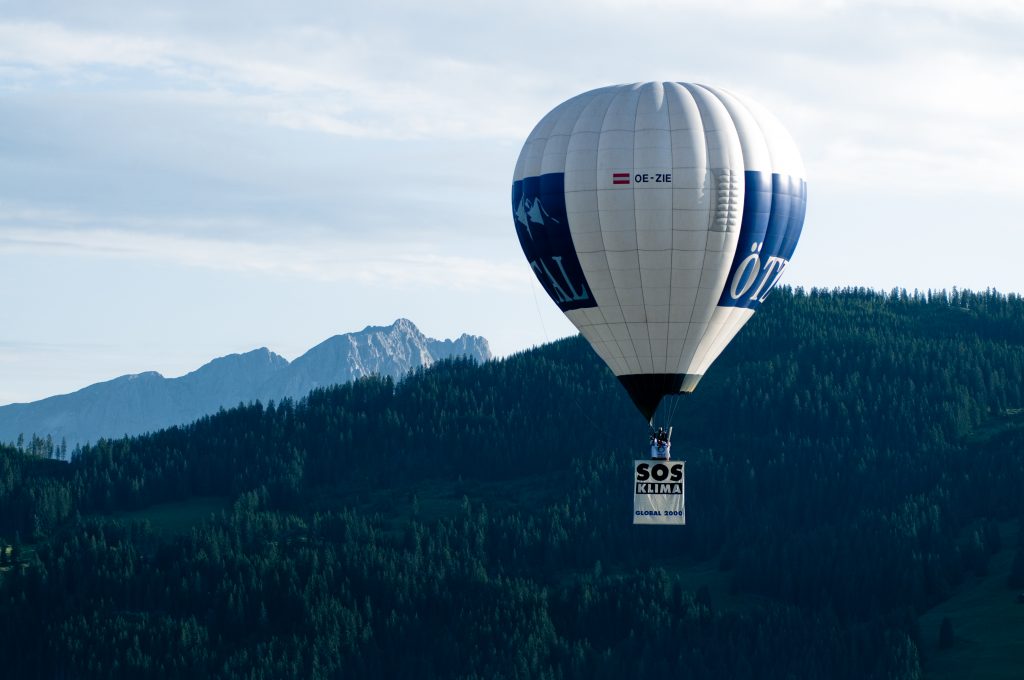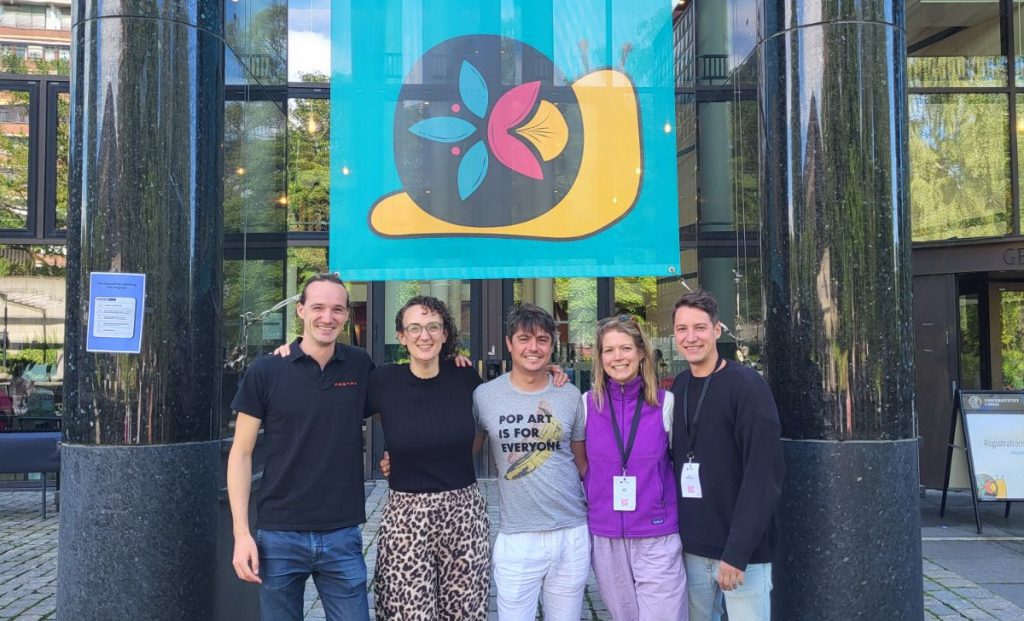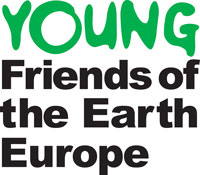4 September 2007, Strasbourg – Current proposals to include aviation in the EU Emissions Trading Scheme will have very little impact on aviation’s contribution to climate change, a new report by leading climate scientists warns today. Friends of the Earth, which commissioned the research, is urging the EU to substantially strengthen its ETS proposals, and is calling for additional measures to curb the growth in flights.
The authors of the report – experts from the Tyndall Centre for Climate Change Research at the University of Manchester – and Friends of the Earth campaigners, will brief MEPs on the findings at a special meeting in the European Parliament in Strasbourg later today (Tuesday). The event will be hosted by Chris Davies MEP, a member of the European Parliament’s Environment Committee. The European Parliament and Council are due to discuss and vote on amendments to the EU proposal to bring aviation into the ETS over the coming weeks. A range of amendments that could either strengthen or weaken the ETS proposal have been tabled by MEPs (1).
The Tyndall Centre’s new report, ‘Aviation in a Low-Carbon EU’ investigates to what extent EU proposals to include aviation in its Emissions Trading Scheme (ETS) would help deliver a low-carbon EU future. The EU plans to include aviation in the EU ETS from 2011 for intra-EU flights, with ALL flights departing from or arriving in the EU included from 2012.
The EU ETS was launched in 2005 and covers around 45 per cent of EU carbon dioxide emissions (2). Under the scheme, power stations, refineries and heavy industry across Europe are given a limit to how much carbon dioxide they can emit. Participants in the scheme must hold sufficient carbon dioxide permits to match their levels of pollution. Companies that exceed their permits must buy extra allowances from those companies who have managed to reduce their emissions – or pay stiff fines. The EU Emissions Trading Scheme is currently under review (3).
Dr. Kevin Anderson, Director of the Tyndall Centre’s Energy Programme said:
“We delude ourselves if we believe the proposed framing of the EU ETS is in keeping with the EU’s own and repeated commitment to limit climate change to a two degrees Celsius rise. The current aviation ETS proposal must be significantly strengthened so as to both drive down emission growth rates and force the adoption of more efficient aircraft technologies and operation.”
Friend of the Earth’s aviation campaigner, Richard Dyer said:
“Current proposals to include aviation within the EU Emissions Trading Scheme are a totally inadequate response to the threat that the growth in aviation emissions poses to efforts to tackle climate change. MEPs and EU Council Ministers must show vision and leadership and substantially strengthen the aviation ETS during the legislative process this autumn.”
“Other political measures are also needed to tackle the growing climate impact of flying. This should include VAT on air tickets, a tax on aviation fuel and opposition to new runways.”
Environment spokesman for the Liberal Group (ALDE) in the Parliament, Chris Davies MEP said:
“We must tackle the rapid growth in the EU’s aviation emissions if we are to succeed in preventing dangerous climate change. The Commission’s plans to bring aviation into the Emissions Trading Scheme hardly scratch the surface of the problem and will not come close to delivering the necessary emissions’ cuts. The European Parliament must now amend the proposal to make it more effective.”
The Tyndall Centre’s research found that:
- In order for aviation to play its part in keeping EU carbon dioxide below dangerous levels (4) – the EU must considerably strengthen the aviation ETS proposal.
- Current and envisaged carbon dioxide permit prices of less than 50 Euros per tonne will have little impact on the demand for flights – and hence will barely affect the rapid growth in aviation emissions.
- Even a much higher carbon price of 300 Euros per tonne would only result in a moderate increase in ticket prices, and therefore only a moderate reduction in demand and emissions growth.
- The aviation ETS proposal will not provide sufficient incentives for the aviation industry to make the necessary efficiency improvements in order for the sector to be part of a low carbon EU future
Tyndall recommends:
1. That the EU ETS for aviation must be strengthened:
- Aviation should be brought into the ETS earlier, by 2010 at the latest (5). EU passenger numbers have recently grown at around 6-7 per cent per year, with emissions growing by six per cent annually. By 2012 EU aviation emissions are likely to have increased by 25 per cent – 60 per cent from 2005 levels.
- The EU should use a 1990 baseline for measuring carbon dioxide from aviation. This will make the ETS more effective at cutting emissions and bring aviation into line with other sectors and the Kyoto Protocol.
- To maximise the economic efficiency of the EU ETS carbon permits should be auctioned (6) – not allocated to airlines for free – in line with the ‘polluter pays’ principle and recommended in last year’s Stern report (7).
2. That efficiency improvements in aviation must happen more quickly than in the past:
- Improvements to aircraft and engine technology must happen faster than ever before (8).
- Operational changes such as improved air traffic control and measures to improve aircraft loading must also be introduced.
Friends of the Earth backs Tyndall’s conclusions, but says that even with improvements to the proposal, including aviation within the EU ETS is not enough. The environmental campaign group is calling on the EU and member states to introduce additional measures including:
- A clause in the ETS proposal to ensure that the aviation industry meets its stated combined technology and operational efficiency improvement target of 3.5 per cent per annum before being allowed to buy carbon permits from other sectors (9);
- Making the cost of flying reflect its environmental impact. This should include a tax on aviation fuel and VAT on air tickets;
- A presumption against new airport infrastructure, especially new airports and runways; If air travel levels (passenger km) were kept stable, emissions would fall through technology and operational improvements.
***
The Report Summary can be found at: http://www.foe.co.uk/resource/reports/aviation_tyndall_07_summ.pdf
The Report Summary in Dutch, French, German, Italian, Polish and Spanish can be found at: http://www.foe.co.uk/resource/reports/aviation_tyndall_summ_es.pdf
http://www.foe.co.uk/resource/reports/aviation_tyndall_summ_de.pdf
http://www.foe.co.uk/resource/reports/aviation_tyndall_summ_fr.pdf
http://www.foe.co.uk/resource/reports/aviation_tyndall_summ_it.pdf
http://www.foe.co.uk/resource/reports/aviation_tyndall_summ_pl.pdf
http://www.foe.co.uk/resource/reports/aviation_tyndall_summ_nl.pdf
The full report can be found at: http://www.foe.co.uk/resource/reports/aviation_tyndall_07_main.pdf
EU TIMETABLE:
- Aviation ETS proposal published by the European Commission December 2006 (10).
- The proposal is currently progressing through the ‘Co-decision process’ in which both the EU Parliament and the European Council have joint powers to decide.
- Amendments to the design / effectiveness of aviation ETS will be voted on by EU Parliament this autumn. The Parliament’s Transport and Environment Committees have both produced reports recommending changes to the proposal. These committees will discuss and vote on amendments to the proposal during the next few months. In November all MEPs have a say in a ‘plenary’ vote.
- Aviation ETS directive finalised 2008
- Introduced 2011/2012 (current plan)
Aviation and climate change – some facts and figures:
- Aviation is the fastest growing source of EU carbon dioxide emissions. EU aviation emissions have doubled since 1990 alone.
- Aviation fuel is currently untaxed on the vast majority of flights this tax exemption is worth 35bn Euros per annum if airlines paid the EU average duty applied to motor fuel. It is legally feasible for the EU to introduce such a tax with the agreement of member states (11).
- 5 or 6 of top ten destinations served by London’s airports could be reached by high speed rail (12).
- A joint NGO position statement on aviation ETS and how it must be improved is at: http://www.foe.co.uk/resource/briefings/aviation_in_the_euets.pdf
***
REFERENCES
(1) See ‘EU TIMETABLE’ above
(2)Excluding international emissions from aviation and shipping
(3 Joint NGO position on the ETS review: http://www.foe.co.uk/resource/consultation_responses/eu_ets_review.pdf
(4) Tyndall used a 450ppm CO2 target
(5) A number of MEPs have called for the Scheme to start in 2010
(6) The current ETS proposal allocates almost all (about 97 per cent) carbon permits for free by benchmarking based on airlines past performance
(7)STERN review on economics of climate change for UK Government, October 2006
(8)Aircraft technology improvements currently achieve an average of about 1.2 per cent per annum efficiency savings see: http://www.foe.co.uk/resource/reports/aviation_tyndall_research_summary.pdf
(9)This demand has been put down as an amendment to the EU proposal
(10)See EC web page for more information: http://ec.europa.eu/environment/climat/aviation_en.htm
(11)See ‘Clearing the Air’: http://www.transportenvironment.org/docs/Publications/2006/2006-06_aviation_clearing_the_air_myths_reality.pdf
(12)5 or 6 of the top 10 destinations served by London’s airports are or could be served by high speed rail services, see: http://www.london.gov.uk/mayor/sustainable-development/docs/lsdc_airtransportimpacts.pdf







